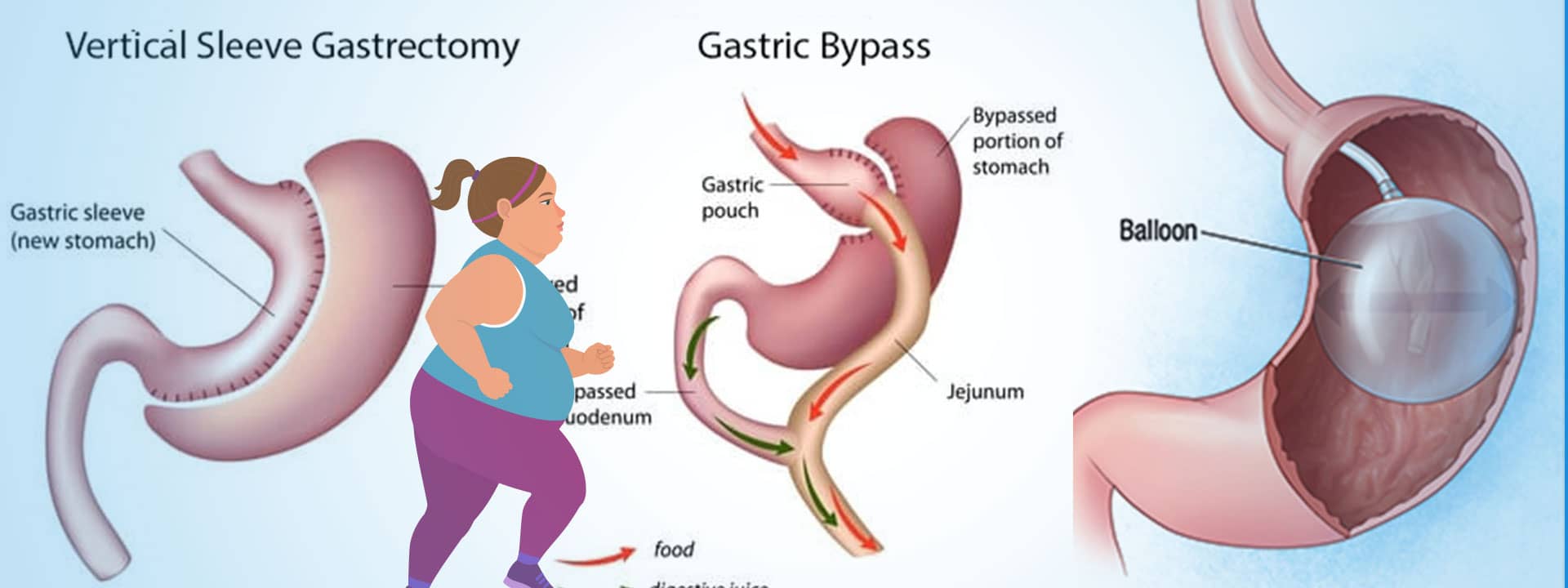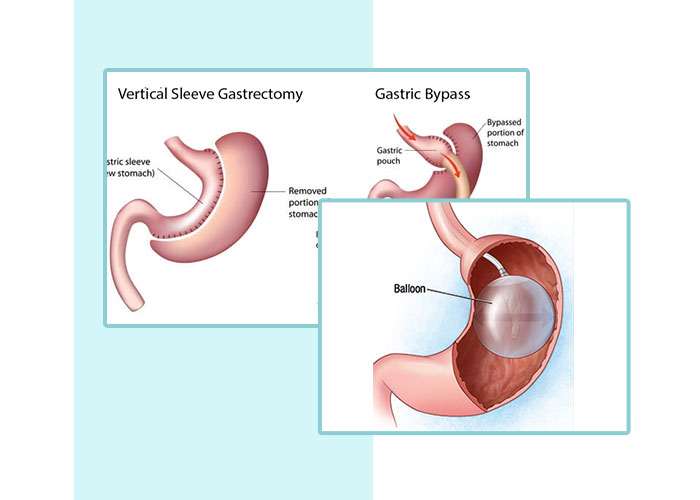

Bariatric (Obesity) surgery, or weight loss surgery, includes a variety of procedures performed on people who are obese. Weight loss is achieved by reducing the size of the stomach through the removal of a portion of the stomach (sleeve gastrectomy) or by resecting and re-routing the small intestines to a small stomach pouch (gastric bypass surgery). It is done when diet and exercise haven't worked for you. It works by reducing your body's ability to absorb nutrients. To understand how it works and its benefits we first need to address the problem itself.
Obesity is a life-long progressive and life-threatening condition marked by the excess accumulation of body fat in your body which can significantly reduce life expectancy. When the weight reaches extreme levels, it is called MORBID OBESITY. It is a chronic condition with numerous medical, psychological and social consequences.

Finding out if you are obese is simple; you calculate your Body Mass Index or BMI. Obesity is also defined by waist size - over 90 cm in males and over 80 cm in females.
Sleeve Gastrectomy:
The Vertical Sleeve Gastrectomy (VSG) trigger weight loss solely through gastric restriction (reduced stomach volume). In VSG approximately 2/3rd of the stomach is stapled off along its greater curvature, leaving behind 1/3rd stomach along the lesser curvature, which is roughly the size and shapes of a Banana or Sleeve. This operation does not involve any “rerouting” or reconnecting of the intestines. Hence it is technically a simpler operation than the gastric bypass.
Gastric Bypass Roux-en-y:
It creates a small pouch in the upper stomach which restricts the amount of food consumption. With the help of stapling, a portion of the small intestine is bypassed which delays the mixing of food with digestive juices. Thus the caloric absorption is restricted. It promises an average 77 % of excess body weight reduction in the first year after surgery. A study shows that after 10 to 14 years, patients maintain 60 % of excess body weight loss. In most cases, patients report an early sense of fullness even after consuming small portion of food. This reduces the desire to have more food and thus helps lose weight.
Intragastric Air Balloon:
In this procedure, an air balloon is inserted in the stomach through the endoscopic route. This procedure is nonsurgical and minimally invasive. Intragastric Air Balloon is filled inside the stomach to create short term and rapid weight loss. It promotes the sensation of fullness after having a small portion of meal. This balloon is temporary and has to be extracted after six months to 1 year. Results of the surgery:
Patient will lose about 70 to 80 % of their overweight within span of 8 months to 1 year.
Get your Bariatric (Obesity) surgery operated by Gujarat's top doctors who provide excellent service at Radiance Hospitals for weight loss treatment.
Bariatric surgery is really good if you're looking for long term weight management.
It is completely safe when performed by specialists in Radiance Hospitals.
If your BMI is above 40, you are eligible for bariatric surgery.
You need to follow a strict diet of liquid or semi solid food right after your bariatric surgery. We provide complete post operative care with a diet plan.
Bariatric surgery lasts for about 1-2 hours. The whole weight loss process takes around 6 months.
The recovery time for bariatric surgery is about 6 months. It can take more depending upon the person.